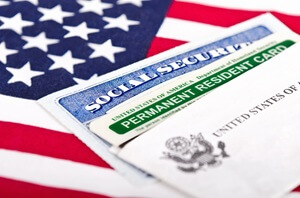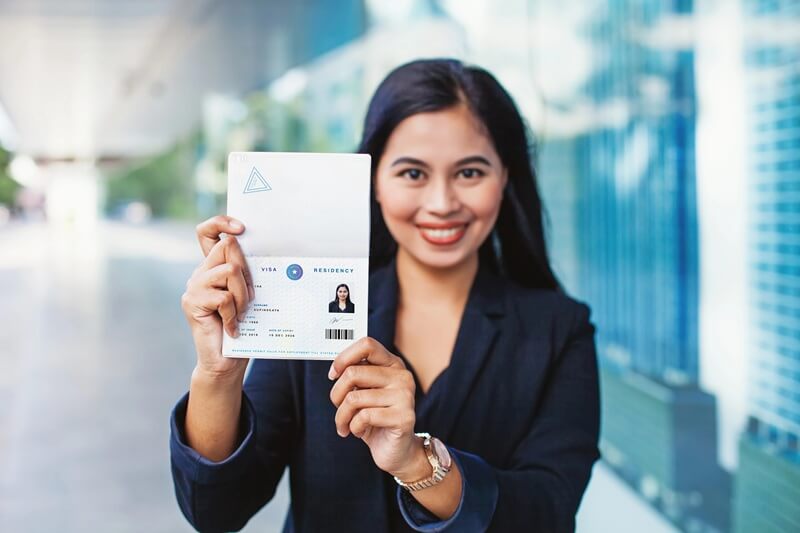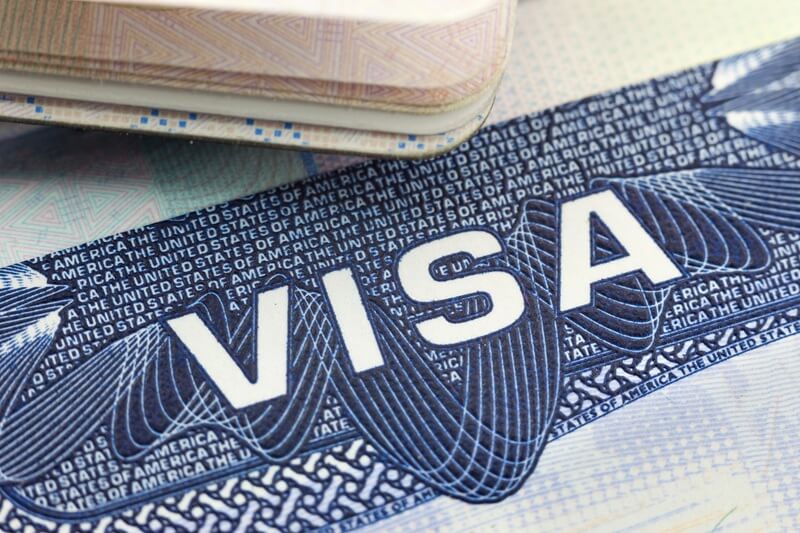
Is H-1B Stamping Required After I-485 Approval?
For many H-1B Visa holders, the journey to permanent residency involves multiple steps and legal considerations. During this process, a frequent question is whether H-1B stamping is still necessary after I-485 approval. The answer depends on the individual’s immigration status and travel plans.
Clarifying these requirements can help avoid unnecessary delays and ensure a smooth transition to permanent residency. This article explains the relationship between H-1B and I-485, travel considerations, and the role of immigration attorneys in Fort Worth.
What Is The Relationship Between H-1B & I-485
Understanding the connection between H-1B Visas and I-485 approval is necessary for professionals pursuing permanent residency. The H-1B Visa allows foreign nationals to work in specialized fields for an initial three years, which can be extended to six.
Many individuals file an I-485 application, the final step toward obtaining a Green Card during this time. Approval of the I-485 adjusts an individual’s status to permanent resident, allowing them to live and work in the U.S. indefinitely.
While awaiting approval, most H-1B holders maintain their Visa status to continue working and traveling without interruption. Once I-485 is approved, the Green Card replaces the need for H-1B stamping for travel and work authorization.
Understanding this overlap between H-1B and I-485 approvals is key to avoiding disruptions in employment or residency. After I-485 approval, a common question arises: Is H-1B stamping still required?
Do You Need H-1B Stamping After I-485 Approval?
A common concern for H-1B holders is whether Visa stamping is required after I-485 approval. The need for stamping depends on the timing of the Green Card issuance and the individual’s travel or employment plans. In most situations, H-1B stamping is unnecessary once I-485 is approved.
After receiving permanent residency, individuals can travel using their Green Card instead of relying on an H-1B Visa. However, some choose to keep their H-1B status valid until the physical green card arrives as a precaution.
In certain situations, H-1B stamping may still be required. If Form I-485 is pending and the H-1B Visa is nearing expiration, renewing the Visa can prevent status gaps. Before the Green Card is issued, travel abroad may also require a valid H-1B status to ensure smooth re-entry.
Consular processing, rather than adjustment of status, may require additional H-1B stamping. After I-485 approval, H-1B stamping is generally unnecessary. However, individuals with pending applications should secure Advance Parole to avoid delays in their Green Card process during international travel.
While H-1B stamping may not apply, having the correct travel documents is essential for re-entry into the U.S.
Can You Travel Internationally After I-485 Approval?
Travel requirements change once I-485 approval is granted. Knowing which documents to carry can prevent disruptions during international trips. After I-485 approval, the Green Card becomes the primary travel document. H-1B Visa stamping is no longer needed, as the Green Card allows re-entry into the U.S. without additional paperwork.
If your I-485 application is pending, you must get an Advance Parole for international travel. This document permits re-entry without canceling the adjustment process. Traveling without Advance Parole can result in abandoning the I-485 application, forcing the individual to restart the process from the beginning.
Having the proper travel documents helps avoid unnecessary complications and ensures you maintain your status while awaiting your Green Cards. However, travel isn’t the only concern after I-485 approval—employment status also changes.
Understanding work authorization post-approval is key to ensuring job stability and continued career growth.
Can You Maintain Employment Post I-485 Approval?
Employment requirements shift significantly once I-485 approval is granted, providing automatic work authorization and expanding job opportunities. This change offers greater flexibility, removing the need to maintain H-1B status for employment.
After approval of the I-485, the Green Card provides immediate work authorization, eliminating the requirement for employer sponsorship. Permanent residents can work for any company or start their own business without restrictions. This transition secures long-term job stability and opens doors to new career paths.
Until I-485 approval is finalized, H-1B status remains valid, allowing individuals to continue working without interruption. Some choose to keep their H-1B status active until the physical Green Card arrives to avoid employment gaps. This overlap ensures seamless work authorization throughout the process.
Understanding these changes helps individuals plan their careers confidently, knowing their legal work status will remain uninterrupted. However, questions often arise about maintaining H-1B status during the transition to permanent residency. Addressing these common concerns can help ensure a smooth and secure shift to a Green Card.
What Are The Concerns About H-1B & Green Card Overlap?
Several common concerns exist regarding the overlap between H-1B status and Green Card applications. Addressing these questions can help prevent unexpected setbacks during the adjustment process.
One significant concern is the risk of canceling the I-485 application by traveling internationally without Advance Parole. Leaving the U.S. without this document can automatically cancel the pending application, requiring the individual to restart the adjustment of status process.
Another frequent question involves switching jobs while I-485 is pending. H-1B holders can change employers without jeopardizing their status. This is true as long as the new employer files for another H-1B petition, amending or extending the Visa. The flexibility allows for continued employment and job mobility without affecting the Green Card application.
Understanding these risks helps individuals protect their status and avoid delays. Fort Worth Immigration Lawyers offer support to manage H-1B and Green Card transitions. Their guidance keeps clients informed and prepared throughout the process.
How Can Fort Worth Immigration Lawyers Help?

At Fort Worth Immigration Lawyers, we provide dedicated legal support for H-1B Visa renewals, I-485 applications, and Green Card filings. Our team guides clients through every stage of the immigration process, from filing applications to addressing travel and employment concerns.
We personalize each case, carefully handling all details to avoid unnecessary delays or errors. We also address documentation, Visa stamping, and Advance Parole to protect immigration status during Green Card processing.
We assist with maintaining H-1B status or completing the final steps for permanent residency, providing guidance to simplify the process. We aim to ensure clients are fully prepared for travel, employment, and long-term residency in the U.S.
H-1B stamping is generally unnecessary after I-485 approval, as the Green Card replaces previous Visa requirements. For those with pending I-485 applications, Advance Parole allows international travel without canceling the adjustment process. It also helps prevent unnecessary complications during Green Card processing.
Fort Worth Immigration Lawyers can provide comprehensive services to assist you in transitioning from H-1B to permanent residency. We ensure smooth processing, timely filings, and legal clarity at every stage. We are committed to guiding you through each step, addressing concerns, and helping you achieve permanent residency without unnecessary delays.
Share this article
Table Of Contents
Latest articles
April 1, 2025
April 1, 2025
April 1, 2025
Categories





